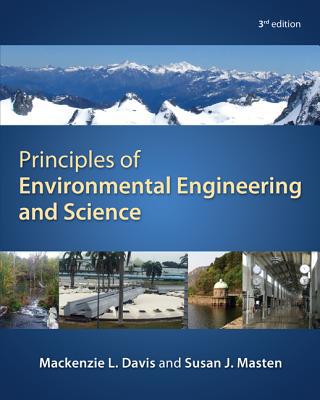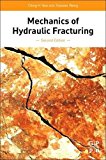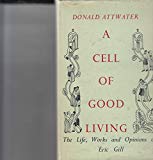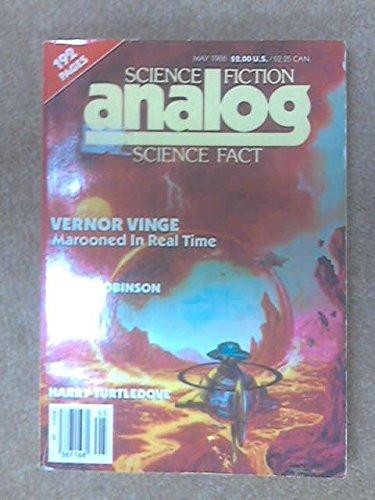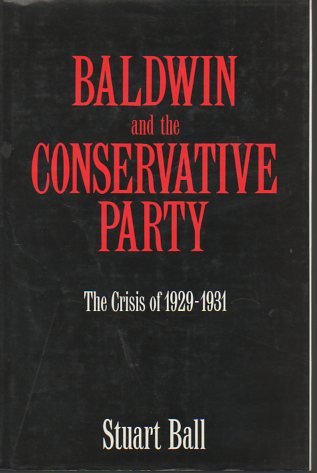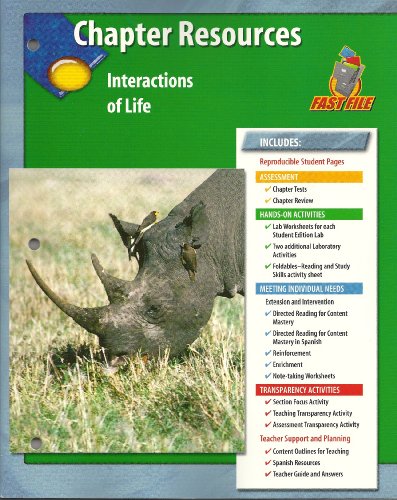Principles of Environmental Engineering & Science
Davis, Mackenzie
Masten, Susan
Machine Generated Contents Note: 1.introduction -- 1-1.what Is Environmental Science? -- Natural Science -- Environmental Science -- Quantitative Environmental Science -- 1-2.what Is Environmental Engineering? -- Engineering -- Environmental Engineering -- 1-3.historical Perspective -- Overview -- Hydrology -- Water Treatment -- Wastewater Treatment -- Air Pollution Control -- Solid And Hazardous Waste -- 1-4.how Environmental Engineers And Environmental Scientists Work Together -- 1-5.introduction To Principles Of Environmental Engineering And Science -- Where Do We Start? -- A Short Outline Of This Book -- 1-6.environmental Systems -- Overview -- Systems -- Water Resource Management System -- Air Resource Management System -- Solid Waste Management System -- Multimedia Systems -- Sustainability -- 1-7.environmental Legislation And Regulation -- Acts, Laws, And Regulations -- 1-8.environmental Ethics -- Case 1 To Add Or Not To Add -- Case 2 You Can't Do Everything At Once -- Chapter Review -- Problems -- Discussion Questions -- References -- 2.chemistry -- Case Study: To Mtbe Or Not To Mtbe? -- 2-1.introduction -- 2-2.basic Chemical Concepts -- Atoms, Elements, And The Periodic Table -- Chemical Bonds And Intermolecular Forces -- The Mole, Molar Units, And Activity Units -- Chemical Reactions And Stoichiometry -- Chemical Equilibrium -- Reaction Kinetics -- 2-3.organic Chemistry -- Alkanes, Alkenes, And Alkynes -- Aryl (aromatic) Compounds -- Functional Groups And Classes Of Compounds -- 2-4.water Chemistry -- Physical Properties Of Water -- States Of Solution Impurities -- Concentration Units In Aqueous Solutions Or Suspensions -- Buffers -- 2-5.soil Chemistry -- 2-6.atmospheric Chemistry -- Fundamentals Of Gases -- Chapter Review -- Problems -- Discussion Questions -- References -- 3.biology -- Case Study: Poison Water? -- 3-1.introduction -- 3-2.chemical Composition Of Life -- Carbohydrates -- Nucleic Acids -- Proteins -- Lipids -- 3-3.the Cell -- Prokaryotes And Eukaryotes -- Cell Membrane -- Cell Organelles Of Eukaryotes -- Cell Organelles Of Plant Cells -- Cell Organelles Of Prokaryotes -- 3-4.energy And Metabolism -- Cells, Matter, And Energy -- 3-5.cellular Reproduction -- The Cell Cycle -- Asexual Reproduction -- Sexual Reproduction -- 3-6.diversity Of Living Things -- 3-7.bacteria And Archaea -- Archaea -- Bacteria -- 3-8.protists -- Protozoa -- Algae -- Slime Molds And Water Molds -- 3-9.fungi -- Chytridiomycota -- Zygomycota -- Ascomycota -- Basidiomycota -- Deuteromyceta -- 3-10.viruses -- 3-11.microbial Disease -- 3-12.microbial Transformations -- Chapter Review -- Problems -- Discussion Questions -- References -- 4.materials And Energy Balances -- 4-1.introduction -- 4-2.unifying Theories -- Conservation Of Matter -- Conservation Of Energy -- Conservation Of Matter And Energy -- 4-3.materials Balances -- Fundamentals -- Time As A Factor -- More Complex Systems -- Efficiency -- The State Of Mixing -- Including Reactions And Loss Processes -- Reactors -- Reactor Analysis -- 4-4.energy Balances -- First Law Of Thermodynamics -- Fundamentals -- Second Law Of Thermodynamics -- Chapter Review -- Problems -- Discussion Questions -- References -- 5.ecosystems -- Case Study: Ddt'curse Or Blessing? -- 5-1.introduction -- Ecosystems -- 5-2.human Influences On Ecosystems -- 5-3.energy And Mass Flow -- Bioaccumulation -- 5-4.nutrient Cycles -- Carbon Cycle -- Nitrogen Cycle -- Phosphorus Cycle -- Sulfur Cycle -- 5-5.population Dynamics -- Bacterial Population Growth -- Animal Population Dynamics -- Human Population Dynamics -- 5-6.lakes: An Example Of Mass And Energy Cycling In An Ecosystem -- Stratification And Turnover In Deep Lakes -- Biological Zones -- Lake Productivity -- Eutrophication -- 5-7.environmental Laws To Protect Ecosystems -- Chapter Review -- Problems -- Discussion Questions -- References -- 6.risk Perception, Assessment, And Management -- Case Study: No Swimming! -- 6-1.introduction -- 6-2.risk Perception -- 6-3.risk Assessment -- Data Collection And Evaluation -- Toxicity Assessment -- Exposure Assessment -- Risk Characterization -- 6-4.risk Management -- Chapter Review -- Problems -- Discussion Questions -- References -- 7.hydrology -- Case Study: The Dying Of A Sea -- 7-1.fundamentals Of Hydrology -- The Hydrological Cycle -- 7-2.measurement Of Precipitation, Evaporation, Infiltration, And Streamflow -- Precipitation -- Evaporation -- Infiltration -- Streamflow -- 7-3.groundwater Hydrology -- Aquifers -- 7-4.groundwater Flow -- 7-5.well Hydraulics -- Definition Of Terms -- Cone Of Depression -- 7-6.surface Water And Groundwater -- As A Water Supply -- 7-7.depletion Of Groundwater And Surface Water -- Water Rights -- Water Use -- Land Subsidence -- 7-8.stormwater Management -- Low Impact Development -- Wet Weather Green Infrastructure -- Chapter Review -- Problems -- Discussion Questions -- References -- 8.sustainability -- Case Study: A New Precious Metal -- Copper! -- 8-1.introduction -- Sustainability -- The People Problem -- There Are No Living Dinosaurs -- Go Green -- 8-2.water Resources -- Water, Water, Everywhere -- Frequency From Probability Analysis -- Floods -- Droughts -- 8-3.energy Resources -- Fossil Fuel Reserves -- Nuclear Energy Resources -- Environmental Impacts -- Sustainable Energy Sources -- Green Engineering And Energy Conservation -- 8-4.mineral Resources -- Reserves -- Environmental Impacts -- Resource Conservation -- 8-5.soil Resources -- Energy Storage -- Plant Production -- 8-6.parameters Of Soil Sustainability -- Nutrient Cycling -- Soil Acidity -- Soil Salinity -- Texture And Structure -- 8-7.soil Conservation -- Soil Management -- Soil Erosion -- Chapter Review -- Problems -- Discussion Questions -- References -- 9.water Quality Management -- Case Study: There She Blows! -- 9-1.introduction -- 9-2.water Pollutants And Their Sources -- Point Sources -- Nonpoint Sources -- Oxygen-demanding Material -- Nutrients -- Pathogenic Organisms -- Suspended Solids -- Salts -- Pesticides -- Pharmaceuticals And Personal Care Products -- Endocrine-disrupting Chemicals -- Other Organic Chemicals -- Arsenic -- Toxic Metals -- Heat -- Nanoparticles -- 9-3.water Quality Management In Rivers -- Effect Of Oxygen-demanding Wastes On Rivers -- Biochemical Oxygen Demand -- Laboratory Measurement Of Biochemical Oxygen Demand -- Additional Notes On Biochemical Oxygen Demand -- Nitrogen Oxidation -- Do Sag Curve -- Effect Of Nutrients On Water Quality In Rivers -- 9-4.water Quality Management In Lakes -- Control Of Phosphorus In Lakes -- Acidification Of Lakes -- 9-5.water Quality In Estuaries -- 9-6.water Quality In Oceans -- 9-7.groundwater Quality -- Contaminant Migration In Groundwaters -- 9-8.source Water Protection -- Chapter Review -- Problems -- Discussion Questions -- References -- 10.water Treatment -- Case Study: Walkerton -- The Town Where Kids Died From E. Coli -- 10-1.introduction -- Water Quality -- Physical Characteristics -- Chemical Characteristics -- Microbiological Characteristics -- Radiological Characteristics -- U.s. Water Quality Standards -- Water Classification And Treatment Systems -- 10-2.rapid Mixing, Flocculation, And Coagulation -- Colloid Stability And Destabilization -- The Physics Of Coagulation -- Coagulants -- Mixing And Flocculation -- 10-3.softening -- Hardness -- Lime -- Soda Softening -- Ion-exchange Softening -- 10-4.sedimentation -- Overview -- Determination Of Settling Velocity (vs) -- Determination Of Overflow Rate (vo) -- 10-5.filtration -- 10-6.disinfection -- Disinfection Kinetics -- Disinfectants And Disinfection By-products -- Chlorine Reactions In Water -- Chloramines -- Chlorine Dioxide -- Ozonation -- Ultraviolet Radiation -- 10-7.other Treatment Processes For Drinking Water -- Membrane Processes -- Advanced Oxidation Processes (aops) -- Carbon Adsorption -- Aeration -- 10-8.water Plant Residuals Management -- Mass-balance Analysis -- Sludge Treatment -- Ultimate Disposal -- Chapter Review -- Problems -- Discussion Questions -- References -- 11.wastewater Treatment -- Case Study: Cuyahoga River Burning -- 11-1.introduction -- Wastewater Treatment Perspective -- 11-2.characteristics Of Domestic Wastewater -- Physical Characteristics -- Chemical Characteristics -- Characteristics Of Industrial Wastewater -- 11-3.wastewater Treatment Standards -- Pretreatment Of Industrial Wastes -- 11-4.on-site Disposal Systems -- 11-5.municipal Wastewater Treatment Systems -- 1-6.unit Operations Of Pretreatment -- Bar Racks -- Grit Chambers -- Macerators -- Equalization -- 11-7.primary Treatment -- 11-8.unit Processes Of Secondary Treatment -- Overview -- Role Of Microorganisms -- Population Dynamics -- Activated Sludge -- Trickling Filters -- Oxidation Ponds -- Rotating Biological Contactors -- Integrated Fixed-film Activated Sludge (ifas) -- Moving Bed Biofilm Reactor (mbbr) -- 11-9.disinfection -- 11-10.tertiary Wastewater Treatment -- Filtration -- Carbon Adsorption -- Chemical Phosphorus Removal -- Biological Phosphorus Removal -- Nitrogen Control -- 11-11.land Treatment For Sustainability -- Slow Rate -- Overland Flow -- Rapid Infiltration -- Potential Adverse Affects -- 11-12.sludge Treatment -- Sources And Characteristics Of Various Sludges -- Solids Computations -- Sludge Treatment Processes -- 11-13.sludge Disposal -- Ultimate Disposal -- Land Spreading -- Landfilling -- Dedicated Land Disposal (dld) -- Utilization -- Sludge Disposal Regulations -- Chapter Review -- Problems -- Discussion Questions -- References -- 12.air Pollution -- Case Study: The Fog -- 12-1.introduction -- Air Pollution Perspective -- 12-2.fundamentals -- Pressure Relationships And Units Of Measure -- Relativity -- Adiabatic Expansion And Compression -- 12-3.air Pollution Standards -- 12-4.effects Of Air Pollutants -- Effects On Materials -- Effects On Vegetation -- Effects On Health -- 12-5.origin And Fate Of Air Pollutants -- Carbon Monoxide -- Note Continued: Hazardous Air Pollutants (haps) -- Lead -- Nitrogen Dioxide -- Photochemical Oxidants -- Sulfur Oxides -- Particulates -- 12-6.micro And Macro Air Pollution -- Indoor Air Pollution -- Acid Rain -- Ozone Depletion -- Global Warming -- 12-7.air Pollution Meteorology -- The Atmospheric Engine -- Turbulence -- Stability -- Terrain Effects -- 12-8.atmospheric Dispersion -- Factors Affecting Dispersion Of Air Pollutants -- Dispersion Modeling -- 12-9.indoor Air Quality Model -- 12-10.air Pollution Control Of Stationary Sources -- Gaseous Pollutants -- Flue Gas Desulfurization -- Control Technologies For Nitrogen Oxides -- Particulate Pollutants -- Control Technologies For Mercury -- 12-11.air Pollution Control Of Mobile Sources -- Engine Fundamentals -- Control Of Automobile Emissions -- 12-12.waste Minimization For Sustainability -- Chapter Review -- Problems -- Discussion Questions -- References -- 13.solid Waste Engineering -- Case Study: Too Much Waste, Too Little Space -- 13-1.introduction -- Magnitude Of The Problem -- 13-2.characteristics Of Solid Waste -- 13-3.solid Waste Management -- 13-4.solid Waste Collection -- 13-5.waste As Resource -- Background And Perspective -- Green Chemistry And Green Engineering -- Recycling -- Composting -- Source Reduction -- 13-6.solid Waste Reduction -- Combustion Processes -- Types Of Incinerators -- Public Health And Environmental Issues -- Other Thermal Treatment Processes -- 13-7.disposal By Sanitary Landfill -- Site Selection -- Operation -- Environmental Considerations -- Leachate -- Methane And Other Gas Production -- Landfill Design -- Landfill Closure -- Chapter Review -- Problems -- Discussion Questions -- References -- 14.hazardous Waste -- Management -- Case Study: Not A Good Time At The Beach -- 14-1.introduction -- Dioxins And Pcbs -- 14-2.epa's Hazardous Waste Designation System -- 14-3.rcra And Hswa -- Congressional Actions On Hazardous Waste -- Cradle-to-grave Concept -- Generator Requirements -- Transporter Regulations -- Treatment, Storage, And Disposal Requirements -- Underground Storage Tanks -- 14-4.cercla And Sara -- The Superfund Law -- The National Priority List -- The Hazard Ranking System -- The National Contingency Plan -- Liability -- Superfund Amendments And Reauthorization Act -- 14-5.hazardous Waste Management -- Waste Minimization -- Waste Exchange -- Recycling -- 14-6.treatment Technologies -- Biological Treatment -- Chemical Treatment -- Physical/chemical Treatment -- Incineration -- Stabilization-solidification -- 14-7.land Disposal -- Deep Well Injection -- Land Treatment -- The Secure Landfill -- 14-8.groundwater Contamination -- And Remediation -- The Process Of Contamination -- Epa's Groundwater Remediation Procedure -- Mitigation And Treatment -- Chapter Review -- Problems -- Discussion Questions -- References -- 15.noise Pollution -- 15-1.introduction -- Properties Of Sound Waves -- Sound Power And Intensity -- Levels And The Decibel -- Characterization Of Noise -- 15-2.effects Of Noise On People -- The Hearing Mechanism -- Normal Hearing -- Hearing Impairment -- Damage-risk Criteria -- Speech Interference -- Annoyance -- Sleep Interference -- Effects On Performance -- Acoustic Privacy -- 15-3.rating Systems -- Goals Of A Noise-rating System -- The Ln Concept -- The Leq Concept -- The Ldn Concept -- 15-4.community Noise Sources And Criteria -- Transportation Noise -- Other Internal Combustion Engines -- Construction Noise -- Zoning And Siting Considerations -- Levels To Protect Health And Welfare -- 15-5.transmission Of Sound Outdoors -- Inverse Square Law -- Radiation Fields Of A Sound Source -- Directivity -- Airborne Transmission -- 15-6.traffic Noise Prediction -- Leq Prediction -- Ldn Prediction -- 15-7.noise Control -- Source-path-receiver Concept -- Control Of Noise Source By Design -- Noise Control In The Transmission Path -- Control Of Noise Source By Redress -- Protect The Receiver -- Chapter Review -- Problems -- Discussion Questions -- References -- 16.ionizing Radiation -- 16-1.fundamentals -- Atomic Structure -- Radioactivity And Radiation -- Radioactive Decay -- Radioisotopes -- Fission -- The Production Of X-rays -- Radiation Dose -- 16-2.biological Effects Of Ionizing Radiation -- Sequential Pattern Of Biological Effects -- Determinants Of Biological Effects -- Acute Effects -- Relation Of Dose To Type Of Acute Radiation Syndrome -- Delayed Effects -- Genetic Effects -- 16-3.radiation Standards -- 16-4.radiation Exposure -- External And Internal Radiation Hazards -- Natural Background -- X-rays -- Radionuclides -- Nuclear Reactor Operations -- Radioactive Wastes -- 16-5.radiation Protection -- Reduction Of External Radiation Hazards -- Reduction Of Internal Radiation Hazards -- 16-6.radioactive Waste -- Types Of Waste -- Management Of High-level Radioactive Waste -- Waste Isolation Pilot Plant -- Management Of Low-level Radioactive Waste -- Long-term Management And Containment -- Chapter Review -- Problems -- Discussion Questions -- References. Mackenzie L. Davis, Emeritus, Michigan State University, East Lansing, Susan J. Masten, Michigan State University, East Lansing, Mi. Includes Bibliographical References And Index.
| Name in long format: | Principles of Environmental Engineering & Science |
|---|---|
| ISBN-10: | 0073397903 |
| ISBN-13: | 9780073397900 |
| Book pages: | 864 |
| Book language: | en |
| Edition: | 3 |
| Binding: | Hardcover |
| Publisher: | McGraw-Hill Education |
| Dimensions: | Height: 10.1 Inches, Length: 8.1 Inches, Weight: 3.77431392544 Pounds, Width: 1.5 Inches |

